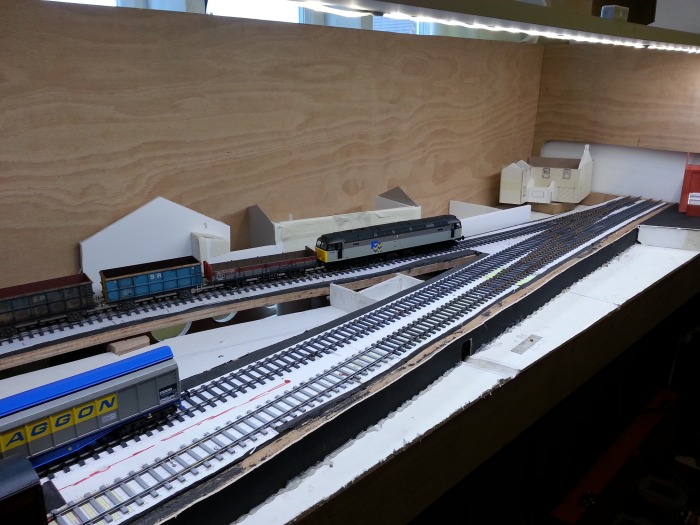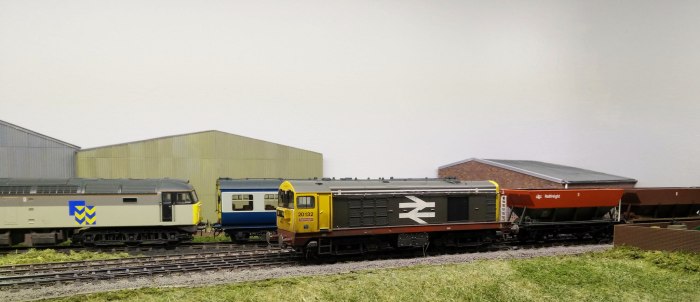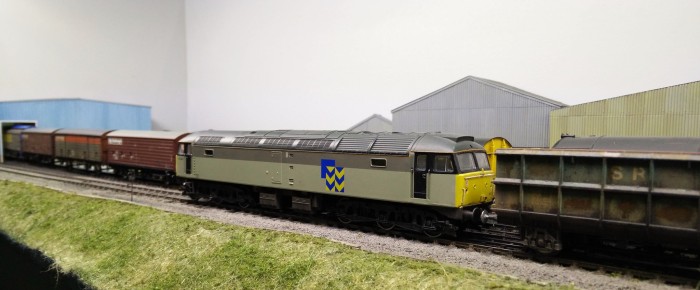For anybody not following our progress over on RMweb, John’s notes below describe the process which the group followed to determine the outline plan for the layout and the steps taken to turn the concept into a project proposal.
Black Country Blues – An Industrial Odyssey
Our introduction to the project began with a round-robin note from Chris (2manyspams) asking the innocuous enough question, “Anyone up for this?” The “this” being a submission to the RMweb Layout competition and to a man, all those asked said “yes”.
So having re-assembled the “team” that has all had a hand in building “New Haden Colliery”, the next question was, “Er, what do we have to do next?”
Well, that was simples! There were these criteria to satisfy, by answering the following questions:
- Who was in the team?
- Which scale/gauge was to be used?
- Where is the layout set?
- When is the period of operation?
- What makes our entry different/unique/inspirational?
- Were there any special skills required/employed?
- Then add a proposed layout plan and approximate dimensions
- Plus some images, or artwork to back up the scheme.
“Ok, we could answer question one, but, what shall we put in our proposal?”
Hey, let’s try brainstorming by e-mail.
Over 24 hours, the replies had included the following suggestions:
- Appeal to wide audience, be unique and inspirational
- Diorama, unusual prototype, industrial atmosphere, maybe with canals
- Midlands location, more than one time period for operations
- Achievable finescale modelling, encouraging others to have a go
- Sectional approach, to spread construction, flexible and quicker
- Handmade track (probably EM gauge) and scratchbuilt structures
- Include some research elements
- Use our existing rolling stock and add simple new builds and conversions
So, our objective:
What we needed was an idea that combined as many of the above suggestions as feasibly possible; something unique and inspirational, an unusual midlands location that was immediately identifiable; a diorama that could be built to finescale standards, using a modular format of construction and be finished into a working layout within a six month timescale.
Now, it’s well-known in the group that I can always be relied upon to come up with an idea. The trouble is – it’s often daft as, an ashtray on a motorbike! However, within 24 hours of “getting the band back together”, to use one of Damian’s favourite phrases – I’d fired out a daft idea. A single A4 page with the following sketchy title: “In search of the Midlands”.
The next steps in the “birth of an idea” and how we got closer to where we are today,
The “Starter for ten” – In Search of the Midlands – repeated the competition information, added a précis of the 30-odd replies and stated the general objective; this was followed by a take on an idea for a Midlands-based diorama, the aim of the concept and a brief technical description all in just 100 words.
The immediate replies suggested a meeting (at Barton Marina, 3rd May), where I presented the concept “In Search of the Midlands”, backed up by a series of rough drawings. There was an introduction to “a layout taking a different approach to railway modelling”, which outlined the relationship between the contemporary railway and its Victorian roots. The importance of maps in the creation of the railway system and some ideas for a model diorama 3168mm (12 chains/264 yards) in length to demonstrate the idea were all included.
The concept was good, The plan looked ok, but it would have made a poor model railway.
Also, around the table, it was obvious that the majority of the team were keener on a “Black Country” subject, rather than the vague Midlands/Cannock Chase general idea that I had started off with.
Back to the drawing board and a week later we all sat around a different table and this time I’d brought a longer sketch, 4224mm long, containing a better proposal. But as the evening progressed, it was obvious it was still not quite right. However, it was whilst the discussion progressed that specific Black Country structures were discussed and the predominance of Staffordshire blue bricks in their construction.
In an e-mail next day, somebody used the phrase “Black Country Blues”; a phrase that not only resonated with the infrastructure of the embryo scheme, but also the atmosphere of the area itself in the core era we were attempting to portray. Here was the banner, upon which to hang our proposal.
Whilst all this scribbling on sheets of paper had been taking place, Chris had been formulating the proposal document to send to the judges of the RMweb competition. And Geoff had been wrestling with Templot, trying to create a trackplan, which would satisfy both the aim of showing the relationship of Victorian engineering to the contemporary railway scene and provide a platform for interesting operations.
Chris produces proposal documents for a living, so he took all my woffle, all the e-mails and extra information and produced a professional six page document describing:
- Who we were
- The scale/ gauge/ period modelled and prototype area
- What made the project different and stand out from the crowd
- Our portfolio of relevant/special skills
- An outline of the project we intended to build – scenic section now 5280mm long!
- And finally a trackplan sketch and a projected budget.
It is a beautifully produced document, which was submitted by e-mail to make the fast approaching deadline. I’m sure it was Chris’s professionalism that won the RMweb competition for the Staffordshire Finescale Group, along with that catchy title – Black Country Blues! (a title now featuring lyrics by Stubby, music by Trisonic and backing vocals by Oldddudders!).
On the scale/ gauge/ period and prototype page, there is a series of thumbnail pictures, featuring bridges, canals, a signalbox and a sketch map of the Black Country. The special skills portfolio page also contains thumbnail pictures of our layouts; New Haden Colliery, Treneglos, Foundry Lane, Diesels in the Duchy and “Once upon a time” (which is again on the back burner for the next eight months!).
Following the notification that our proposal had found favour, another presentation followed, this time to Steve Cole and John Emerson, to seal the deal.
What next?
“More in a bit, our kid” . . . . .
Find out much more about what we are up to at: Black Country Blues – the winning RMweb Project Layout proposal





























